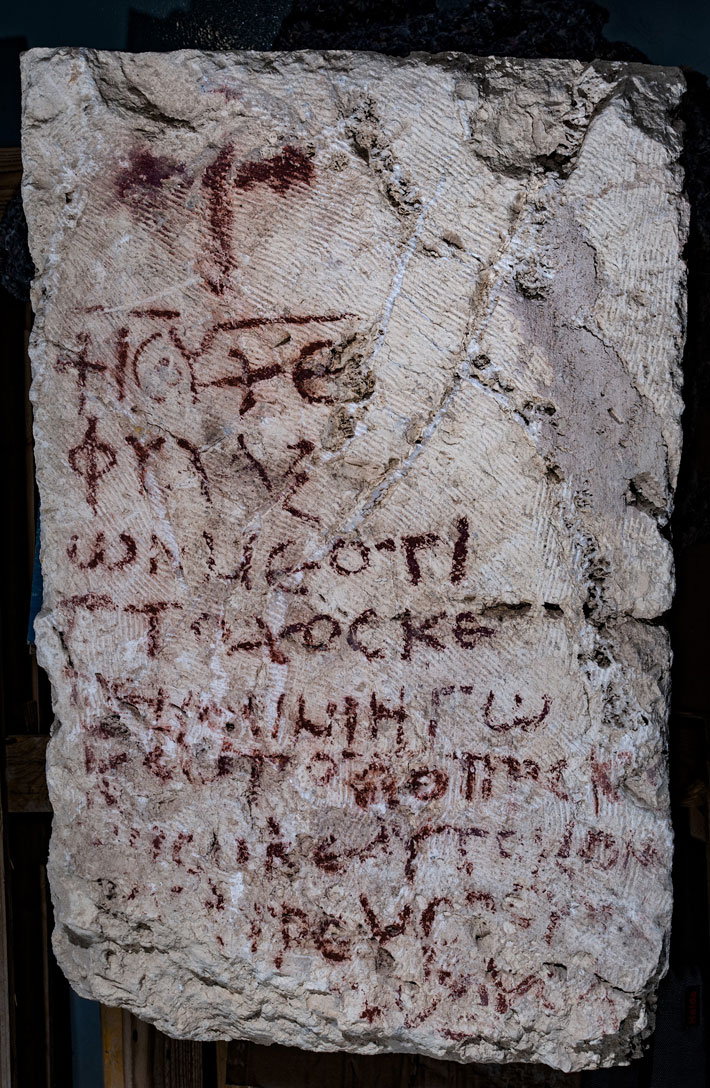 JERUSALEM, ISRAEL—According to a statement released by the Hebrew University of Jerusalem, a team of researchers led by Oren Gutfeld and Michal Haber has begun to investigate Hyrcania, an ancient hilltop fortress in the northern Judean Desert. The fortress was constructed in the late second or early first century B.C., and was later rebuilt and enlarged by Herod the Great. After the ruler’s death in 4 B.C., the site was abandoned until a Christian monastery was established there in A.D. 492. Some of the site’s architectural features resemble those at Herodium, Herod’s palace fortress. “It’s quite possible that the construction was even overseen by the same engineers and planners,” Gutfeld said. A red paint inscription written in Koine Greek, the language of the Christian scriptures, was found on a building stone in an elongated hall thought to have been part of the monastery. Avner Ecker of Bar-Ilan University identified the text as a Christian prayer based on lines from Psalm 86. A second inscription, also found on a building stone, is currently being analyzed. A child-sized gold ring with a turquoise stone bearing an inscription in Arabic Kufic script was also discovered. Nitzan Amitai-Preiss of The Hebrew University has translated this inscription as “God has willed it.” She thinks the ring was used as a seal during the Umayyad caliphate sometime between the seventh and eighth centuries A.D. To read about a massive alabaster bathtub installed in the Herodium, go to "Herod's Fancy Fixtures."
JERUSALEM, ISRAEL—According to a statement released by the Hebrew University of Jerusalem, a team of researchers led by Oren Gutfeld and Michal Haber has begun to investigate Hyrcania, an ancient hilltop fortress in the northern Judean Desert. The fortress was constructed in the late second or early first century B.C., and was later rebuilt and enlarged by Herod the Great. After the ruler’s death in 4 B.C., the site was abandoned until a Christian monastery was established there in A.D. 492. Some of the site’s architectural features resemble those at Herodium, Herod’s palace fortress. “It’s quite possible that the construction was even overseen by the same engineers and planners,” Gutfeld said. A red paint inscription written in Koine Greek, the language of the Christian scriptures, was found on a building stone in an elongated hall thought to have been part of the monastery. Avner Ecker of Bar-Ilan University identified the text as a Christian prayer based on lines from Psalm 86. A second inscription, also found on a building stone, is currently being analyzed. A child-sized gold ring with a turquoise stone bearing an inscription in Arabic Kufic script was also discovered. Nitzan Amitai-Preiss of The Hebrew University has translated this inscription as “God has willed it.” She thinks the ring was used as a seal during the Umayyad caliphate sometime between the seventh and eighth centuries A.D. To read about a massive alabaster bathtub installed in the Herodium, go to "Herod's Fancy Fixtures."
Archaeologists Explore Hilltop Fortress of Hyrcania
